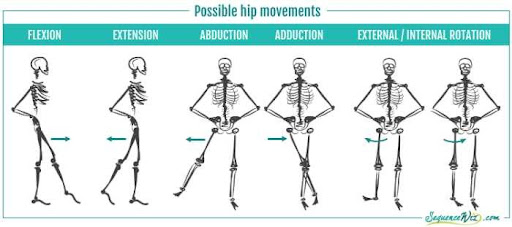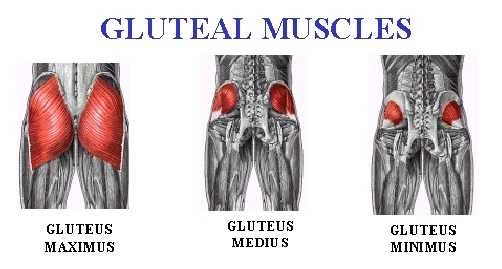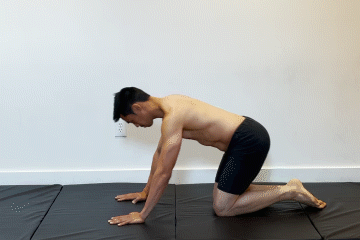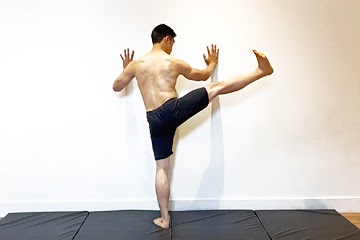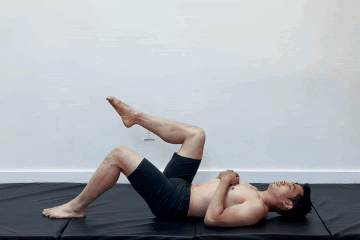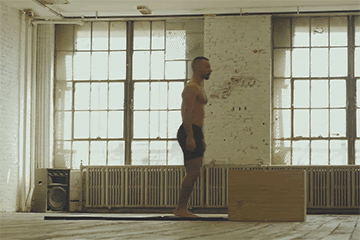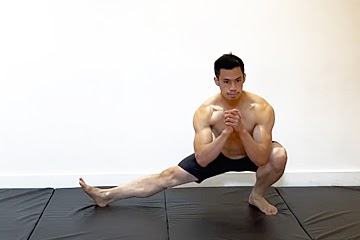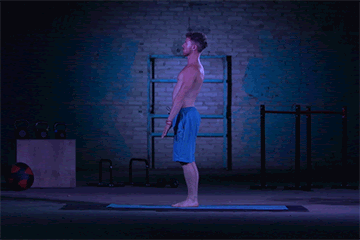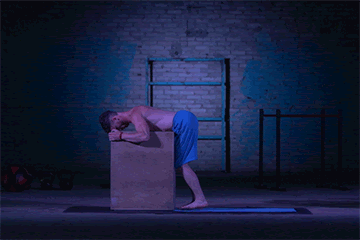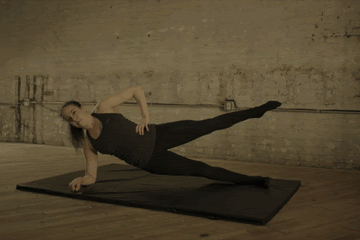
Join the tribe of Movement & Calisthenics Athlete – People just like you that are working with their own body weight to get strength, lose fat build muscle, recover from injuries and live their best lives!
Ladies, ever wonder what the best workout for a toned, tight Butt is?
Well, Calisthenics can be your answer!
The best workouts for toned butts are ones that challenge you and your butt in every way. That means they involve more than just sitting on your butt or leg shakes. They will have you using all of your butt muscles to get results.
This article goes into detail about why this is so important and why it will lead to better results.
It’s not just for beautifully sculpting your buttocks, but also for improving its function!
What are the butt muscles?
The butt has the largest muscle group in your body, which is why it’s able to support your whole body weight and has major roles in many functions and movement patterns.
Below are the major functions of the glutes that help facilitate many movements such as squats, jumps, sprints, and even as simple as walking and standing.
Main functions:
Other possible movements of the hips. Photo from sequencewiz
Hip extension – pushing your hips forward
Hip abduction – moving your thighs away from your body outwards
Hip external rotation – twisting your thighs outward
Posterior Pelvic Tilt (PPT) – tilting your hips forward is a common posture for many calisthenics exercises. It also activates the core.
Not only are the functions of the butt muscles crucial, but developing them adds to a fantastic physique for the ladies and the gentlemen!
Primarily known as the glutes, the butt is made up of the gluteus maximums and gluteus minimus.
The Gluteus Maximus is the largest muscle in the body and booty, which makes it a priority in developing your dream booty. In addition, it is responsible for hip extension, which is a primary force generator for many movement patterns in our everyday life.
Gluteus medius focuses on balance and stabilization so the gluteus maximums can generate force. It’s also responsible for hip abduction. It’s usually neglected in our training but essential for overall leg development. The key here is choosing the right exercise to target it.
What is muscle tone?
But first, let’s talk about what it means to be “toned.”
Most people use the term toning to make the muscles more visible without getting big and huge, making the muscles firmer and less “jiggly.”
Generally speaking, “toning,” “sculpting,” “defining” are marketing terms used to describe improving your muscles’ aesthetics to make them more visible without getting bulky.
These buzz words make people want to get into fitness with the promise of sculpting and toning the muscles.
Unfortunately, you cannot sculpt, tone, define muscles. However, you can make it more visible without getting bulky by changing your body composition.
Prioritize building strength and muscle
What makes your body soft and jiggly are the fats that cover the muscle, so if you want to make the muscles more visible, burn more fat and build more muscles.
Using muscle tone in this context would mean that focusing on getting your glutes stronger and building muscle while losing body fats would be the best way to “tone” your butt.
Ladies, don’t worry. Strength training and muscle-building-focused workouts won’t bulk you up like how men do.
In addition, there’s no way to target specific body parts (spot reduction) for fat loss. Our bodies just don’t work that way. As a result, we can’t control where we can lose fat.
So the best way to approach improving your butt is to grow your butt muscles with a proper workout and generally lose fat.
You should also train your upper body to improve your overall body physique, which will help you improve your butt aesthetic too!
Better start mastering your basics such as push-ups, pull-ups, and the other calisthenics movement patterns. If you need more help with your training, check out our workouts at Bodyweight Training Arena Workouts.
Why not prioritize cardio?
It’s not bad to use cardio. It’s actually a good option to burn calories and “melt” the fat away. But if done excessively or just solely cardio, you risk losing muscle, which will make you lose the “butt definition” you are aiming to achieve.
A mixture of strength/muscle-building training and cardio is a fantastic way to speed up the toning process further.
Aim for proper nutrition & recovery
Along with proper training is meeting these vital factors which heavily influence your progress towards toned and tight glutes.
- Meeting the macronutrients mainly eating enough protein
- Caloric deficit – eating slightly fewer calories than what the body needs
- Getting enough sleep and practicing proper recovery habits
More on muscle-building tips: How to build muscle mass using bodyweight only
Best exercises for your glutes without equipment🔥
Squats and deadlifts are usually the best-known exercises to build the glutes, but they are not the only ones you need since they aren’t the sole function of your glutes.
The set of movement patterns below will help you target all of the muscles of the glutes, including their function.
Using 1 exercise for each category then implementing it in the workout will develop the glutes and the overall legs.
Improve the aesthetics of your behind and also enhance the function of better movement and quality of life.
The exercises below can be modified to easier or harder variations. Remember that we’re training with Progressive calisthenics by choosing the right intensity and good effort challenging your butt and thighs every workout.
Proper warm-up
Warm-up: Pre-activation
Before any workout, a proper warm-up is a must.
Activating specific muscles in warm-up will enhance muscle activation during compound exercise, according to a 2016 study.
This holds especially true since many people tend to underuse glutes due to a sedentary lifestyle and sitting for extended hours in front of the computer.
Activating the glutes is a great way to “remember” how using it feels so you can target your glutes even better during your workout.
Fire-hydrant
1 set of 5 to 10 reps
Opens the hips and activates the glutes in different planes.
How to perform:
- Quadrupled position when both knees are on the floor. Palms facing forward. Knees hip-width apart. Arms extended and pushed down on the floor and shoulder-width apart—hands underneath your shoulders. Keep a neutral head position.
- Lift your left leg back while keeping it bent at a right angle until your hamstrings are shoulder height or until you reach your maximum range of motion.
- Slowly move it to the side outward.
- Pull the left knee back to the starting position.
- Reverse the motion, and that’s one rep.
- Repeat for reps.
- Repeat the movement with your right leg while keeping the right knee bent.
Coaching pointers:
- posterior pelvic tilt
- engage your core
- shoulders in a neutral position but pushed away from your ears
- Keep pushing down on the floor with your arms.
- Chest in a neutral position. Don’t let it arch.
- Actively engage your glutes and thighs
- Move along your mobility
Leg abduction
1 set of 5 to 10 reps
Activates the gluteus medius in such a simple movement.
How to perform:
- Stand tall while arms are holding something sturdy for balance.
- Lift one leg off the floor, and that leg forwards a bit from your body. Point your toes inward.
- Swing your leg outward until its hip height or until your mobility permits.
- Repeat for reps.
- Do the same motion but with toes turned outwards, then repeat for reps.
- Repeat for the other leg.
Coaching pointers
- Point the working toes inward for gluteus medius.
- Point the working toes outward for the gluteus maximus.
- Aim for slow and controlled movement.
- Actively engage your glutes.
Thrust/Bridge
Thrust or bridge type exercises activate the upper and lower glutes in the full hip extension. This type of exercise has the most glute activation you can get from a lower-body exercise, as demonstrated by a 2002 study.
They can assist in alleviating lower back pain since it also strengthens the lower back and the glutes. Weak glutes are associated with lower back pain. This is because then the butt muscles are weak and cannot hold the body. As a result, the spine compensates and takes much unnecessary loading.
Here are excellent examples of this type of exercise.
Glute-ham bridge
Extended glute bridge in a single leg for added difficulty
You can adjust the difficulty of the exercise by elevating your feet or doing the exercise with one leg at a time. For example, finish one set with your right leg, then immediately move to your left leg. Ideally, begin with your weaker (non-dominant) side.
How to perform:
- Begin by lying on the floor—arms on the side. Feet hip-width apart. Feet firmly planted on the floor.
- Actively tilt your hips (posterior pelvic tilt) while still lying on the floor. Maintain this position throughout the movement.
- Lift your hips upwards by pushing on your heels so that your heels, upper back, arms, and head are only in contact with the floor.
- Pause at the top position for 2 seconds.
- Slowly lower until butt nearly touches the floor with control.
- Repeat for reps.
Coaching pointers:
- Keep your core tight to work your glutes even further
- Avoid arching of the lower back
- Avoid arching of the chest. Keep your spine straight
- Maintain glute activation throughout the movement but especially at the to position
Hip thrusts
This exercise is similar to the previous exercise but has the potential to be scaled using weights.
Slowly extend your hips forward, and you will be working your abdominal muscles and lower back muscles as well.
How to perform:
- Prepare an elevated surface such as a box, sofa, or bench that’s around knee height.
- Set your back on the surface and place the middle of your shoulder blades on the edge of the surface.
- Place your right foot forward until your shin can stand vertically when you raise your hips up while your left leg forward hovering and straight.
- Push your hips upward to straighten your body from head to your knee.
- Pause at the top position for a few seconds.
- Slowly lower down until your butt is just above the floor while keeping your upper torso rigid.
- Repeat the motion for reps.
- Switch to your left foot on the floor while your right leg is straight and hovering.
- Repeat reps.
Coaching pointers:
- Keep your neck, shoulders, spine, up to your butt straight and only hinging at the hips.
- Push down the floor with your heels when facilitating the movement.
- Actively squeeze the glutes throughout the range of motion as hard as you can.
- Don’t let your chest extend.
- Right angles should be at your knees when you’re at full hip extension.
- Knees stacked over the heels
- Avoid arching the spine
- Your shoulders should be comfortable
- Maintain posterior pelvic tilt
Squat/Lunge
Squats are a fundamental exercise in resistance training which is why it’s a must-have when training the lower body.
Glutes are activated the most when hips are extended in the squat/lunge position, but in contrast to the main point of the squats, the bottom part should be the most challenging.
This means that reaching deep squats won’t activate the glutes even more, as supported by EMG research.
A 2015 study conducted by Contreras et al., shows that regular squats dominantly hit the quads instead of the glutes, so adjustments are needed in the lowering phase to target the glutes more, such as:
- Point your toes at a 45-degree outwards
- Slightly wider stance
- Upper torso with a very slight forward lean
- Keep the shin vertical
Here are exercises with sound glute activation you can use aside from squats.
Box step-up
If this height is too difficult, you can always regress on a lower surface or do lunges on the floor, following the changes mentioned above.
This is a unilateral exercise that can suit different skill levels by adjusting the high of an elevation.
If the exercise is too strenuous, you may always opt for lunges on the floor.
How to perform:
- Prepare an elevated surface that will challenge you enough.
- Stand tall with feet hip-width apart.
- Step your right foot forward unto the high surface.
- Push down with that leg to stand up on the surface until the working leg is fully extended.
- Slowly bend the knee and lower down with control by catching with your left foot. Let the balls of your foot touch the ground first.
- Repeat the same motion but with the other leg.
- Repeat for reps.
Coaching pointers:
- Don’t bend forward with your upper torso. Keep it upright with a very slight 20-degree angle
- Do an alternate for each leg, then that’s one rep, or finish one set for one leg before moving to the next one
- Push through the heel to step up
- Keep your knees aligned to the edge of your foot when stepping
- Think of stepping forward instead of just upward
Side split squat
Excellent for building tight buns as well as improving your mobility and flexibility. This variation also trains the gluteus medius because of the split stance.
How to perform:
- Stand with legs spread apart wider than feet hip-width apart.
- Slowly bend towards your right foot while keeping the left leg straight. Keep the left heel planted on the ground.
- Push through your working leg to stand up.
- Repeat the motion with the other leg.
Coaching Pointers:
- Place your arms extended in front for counterbalance
- Feet firmly planted at the top position
- Legs straight at the top position
- Upper torso upright
- Lower down to capable mobility
- You can place a low bench or any elevated surface to assist you
- Stand vertically and avoid leading with the hips when you stand back up
Hinge/Pull
Similar to the thrust and bridge but a reverse version of the movement. The emphasis is still on the hip extension targetting the lower glutes and hamstrings.
Single-leg Deadlifts
How to perform:
- Prepare starting position with good posture with feet shoulder-width apart.
- Slightly bend your working leg and hinge forward, bending at the hips while lifting your non-working leg backward and keeping it straight.
- Lower your upper torso until it’s parallel to the ground.
- Stand back up by pulling your glutes and driving your hips into extension.
- Repeat for reps and repeat for the other side.
Coaching Pointers:
- Shoulder relaxed in the depressed and neutral position
- Keep arms straight and use as a counterbalance
- Add weights for a challenge
- Keep the upper torso aligned with the non-working leg’s hamstrings.
Reverse back hyperextension
Also known as an excellent lower back extension and planche exercise, reverse back hyperextension also trains the glutes.
Keeping a slightly straddle position offers more gluteus medius development. You might feel an abdominal stretch at the top but focus on keeping a PPT to avoid overarching of the lower back.
How to perform:
- Lie pronated on an elevated surface.
- Arms by your side or holding on to the elevated surface.
- tucked knees in the starting position.
- Extend hips and legs into straddle.
- Hold the top position for a few seconds.
- Lower with control.
- Repeat for reps.
Coaching Pointers:
- Avoid overarching of the lower back
- Raise legs and hips to surface height
- Full leg squeeze
Abduction
Upper glutes glute medius usually neglected muscle, so this is the perfect opportunity to strengthen it and build it up for a strong and aesthetically pleasing booty.
Take note that this exercise will also train the obliques and hip flexors for an even stronger core!
Elbow side plank raises
How to perform:
- Lie on your side. Left arm bent, chest lifted, left knee on the floor. Knees together. Left hand gripping the floor.
- Push your hips upward and simultaneously lift your right leg up.
- Left shoulder, left hip, and left foot should be aligned.
- Hold the top position for a specified time.
- Repeat on the other side.
Coaching pointers:
- Legs straight for a challenge or knees slightly bent to make it easier
- You can do isotonic movements by pushing from the bottom to the top position instead of holding the top position only
- Shoulders depressed and arms with full tension
- Neck in a neutral position
Glute “Toning” Workout
Thrust/Bridge – 4 sets of 8 reps (2-second pause at the top)
Squat/Lunge – 3 sets of 10 reps (10 for each leg for unilateral exercise)
Hinge/Pull – 3 sets of 15 reps
Abduction – 3 sets of 12 reps
1:30 to 2 minute rest period
Bottom line (no pun intended)
Develop that booty that you’ve always wanted in a functional, science-based manner.
On your way to improving your buns, you could also be building your body capable of movement with freedom and potentially build a six-pack if done correctly.
Remember that exercise is just one component to building a great butt and overall impressive physique.
Prioritize improving your movement and function, then aesthetics will follow.
More help towards a body that can move freely with a booty to boot by taking the assessment below.
TAKE THE ASSESSMENT NOW!


